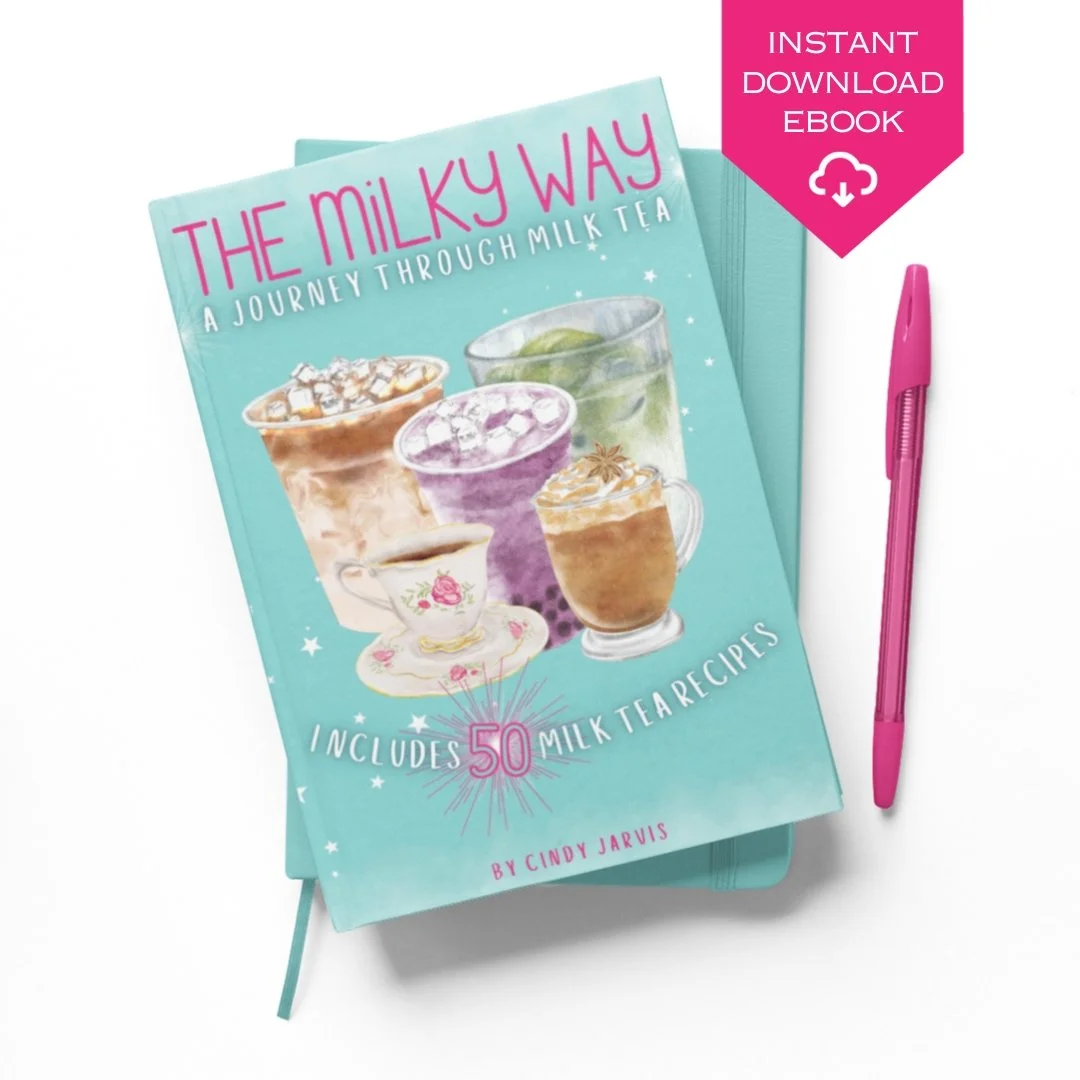Milk in Green Tea: Exploring the Pros and Cons
Welcome to our article exploring the age-old question: Is it acceptable to add milk to green tea? As avid tea lovers, we understand that the wonderful world of tea is filled with varied opinions and customs. While milk is commonly added to black tea, the notion of adding it to green tea may seem controversial to some. In this article, we will discuss the history, cultural practices, and potential impact on taste and health benefits to uncover the truth behind this debated topic. So, whether you're a tea purist or an adventurous tea experimenter, join us as we navigate the complexities of adding milk to green tea!
Decoding the Creamy Debate: Adding Milk to Green Tea - Pros, Cons, and Flavorful Discoveries!
Curious about adding milk to your green tea? Discover the pros, cons, and flavorful possibilities in this comprehensive article!
Can Green Tea and Milk be Taken Together?
While it is not a traditional practice in many cultures, making milk tea using green tea is a matter of personal preference. Green tea, known for its refreshing taste and numerous health benefits, can be enjoyed on its own or with a splash of milk to create a unique flavor profile. Some tea drinkers find that adding milk to green tea can provide a smoother and creamier texture, while others may enjoy the contrast between the grassy notes of green tea and the richness of milk. However, it's important to note that adding milk to green tea may alter the antioxidant properties of the tea, as some studies suggest that milk proteins may bind with tea catechins, reducing their bioavailability. Ultimately, whether or not you choose to add milk to your green tea is a matter of personal taste and preference. So, feel free to experiment and discover your own unique blend of green tea with milk!
Download Your FREE Milk Tea Recipe eBook!
What Does Green Tea With Milk Taste Like?
The taste of green tea with milk can vary depending on personal preference, the type of green tea used, and the amount and type of milk or milk alternative added. Generally, adding milk to green tea can result in a smoother and creamier texture with a milder flavor profile compared to plain green tea.
The milk can add a touch of sweetness and richness to the tea, which can help balance out any potential bitterness or astringency that some green teas may have. The creaminess of the milk can also provide a velvety mouthfeel, creating a different sensory experience compared to drinking green tea without milk.
The taste of tea with milk can be influenced by the type of milk used. For example, whole milk may impart a richer and creamier taste, while skim milk or plant-based milk options like almond milk or soy milk may result in a lighter taste. Additionally, some tea drinkers may choose to add sweeteners or spices, such as honey or cinnamon, to further enhance the flavor of green tea with milk.
Ultimately, the taste of green tea with milk is subjective and can vary depending on personal preference. Some tea drinkers enjoy the combination of green tea and milk, finding it to be a delicious and satisfying beverage, while others may prefer the natural flavor of plain green tea. Experimenting with different ratios of tea to milk, types of milk, and additional flavorings can help you find the perfect balance that suits your taste buds.
Is it Healthy: Does Adding Milk to Green Tea Reduce the Benefits?
The impact of adding milk to green tea on its health benefits and antioxidant properties is a topic of debate among experts. Some studies show that adding milk to green tea may reduce the bioavailability of tea catechins, which are powerful antioxidants known for their health-promoting properties. Milk proteins, specifically caseins, may bind with tea catechins, forming complexes that may be less readily absorbed by the body.
However, it's important to note that the overall impact of adding milk to green tea on its antioxidant benefits may depend on various factors such as the type of green tea, the amount and type of milk used, and individual differences in metabolism. Some experts argue that the reduction in antioxidant activity caused by adding milk to green tea is minimal and may not significantly affect the overall health benefits of drinking green tea.
Furthermore, adding milk to green tea can also provide some nutritional benefits. Milk is a good source of protein, calcium, and other essential nutrients, which can complement the health benefits of green tea. Additionally, the addition of milk to green tea may help mitigate the potential bitterness or astringency of some green teas, making it more enjoyable for some palates. As always, consulting with a healthcare professional or a registered dietitian is recommended for personalized dietary advice.
Explore Making These Green Teas With Milk
While traditionally green tea is enjoyed without milk, there are some types of green tea that can be well-suited for pairing with milk, creating unique flavor profiles and textures. Some popular types of green tea that are commonly enjoyed with milk include:
🍃 Matcha: Matcha is a high-quality powdered green tea that is known for its vibrant green color and rich, creamy flavor. When whisked with hot water, matcha forms a frothy and creamy beverage with a velvety mouthfeel. Adding milk to matcha can further enhance its creamy texture and create a luscious and indulgent beverage. Matcha lattes, made by whisking matcha powder with milk, are a popular option for those who enjoy the combination of matcha's unique flavor and the creaminess of milk.
🍂 Hojicha: Hojicha is a roasted green tea that has a distinct toasty and nutty flavor. The roasting process gives hojicha a reddish-brown color and a milder taste compared to other green teas. Hojicha's roasted flavor can complement the creamy sweetness of milk, creating a comforting and comforting beverage. This type of Japanese milk tea is made by steeping hojicha leaves in hot milk, are a popular option for those who enjoy the toasty notes of hojicha paired with the richness of milk.
🍥 Genmaicha: Genmaicha is a type of green tea that is made by combining green tea leaves with roasted brown rice. This unique combination gives genmaicha a distinctively nutty and savory flavor with a hint of sweetness. The toasty notes of roasted rice can pair well with the creaminess of milk, creating a comforting and unique flavor profile. Genmaicha lattes, made by steeping genmaicha leaves and roasted rice in hot milk, are a popular option for those who enjoy the nutty and toasty flavors of genmaicha combined with milk.
🌿 Sencha: Sencha is a classic Japanese green tea that has a fresh and grassy flavor with a slight sweetness. Sencha is the most commonly consumed type of green tea in Japan and is typically enjoyed without milk. However, some tea drinkers may choose to add a small amount of milk to sencha to create a milder and creamier version of the tea, although this is less common compared to matcha, hojicha, or genmaicha with milk.
It's important to note that the addition of milk to green tea is a matter of personal preference, and some tea purists may prefer to enjoy their green tea without milk to fully appreciate its natural flavors.
FAQs About Adding Milk to Green Tea
1. Does Adding Milk to Green Tea Affect Its Antioxidant Properties?
Yes, adding milk to green tea may reduce its antioxidant properties. Green tea contains catechins, powerful antioxidants linked to numerous health benefits. Some studies suggest that the proteins in milk (caseins) may bind to catechins, reducing their absorption. However, the reduction isn't complete, and you’ll still benefit from the antioxidants, just potentially at a lower level.
2. Which Types of Green Tea Pair Best with Milk?
Creamier and bolder green teas pair best with milk. Matcha, with its rich, umami flavor, is the top choice, perfect for tea lattes. Hojicha, a roasted green tea, also pairs well due to its earthy notes. More delicate teas such as sencha or gyokuro may get overpowered by milk.
3. Is Green Tea with Milk Good for Digestion?
Green tea aids digestion due to its polyphenols. While adding milk doesn’t completely negate these effects, it may slightly diminish them because of protein-polyphenol interactions. However, milk can also soothe the stomach lining, which could be beneficial if you find plain green tea too harsh.
4. What Plant-Based Milk Works Best with Green Tea?
Oat milk is a top choice for its creamy texture and natural sweetness, which complements the grassy notes of green tea. Almond milk offers a nutty flavor that pairs well with matcha. Coconut milk adds richness but may overpower subtle green tea flavors. Soy milk is also popular, especially for matcha lattes, as it froths well.
👉 Read more about plant based milks for tea
5. Can You Make a Green Tea Latte at Home Without a Frother?
Absolutely! You can use a whisk, blender, or mason jar. For matcha lattes, whisk matcha powder with hot water using a bamboo whisk (chasen) or regular whisk until frothy. Heat milk separately and shake it in a mason jar or blend for foam. Combine, and you’ve got a creamy latte—no fancy equipment needed!
👉 Read more about how to mix matcha without a whisk
6. Does Adding Milk to Green Tea Reduce Caffeine Absorption?
There is limited evidence that milk significantly affects caffeine absorption. Green tea already contains less caffeine than coffee, and milk does not appear to inhibit caffeine’s stimulating effects. So, you can still enjoy an energy boost from your green tea latte, even with milk added.
7. How Does Adding Milk Affect the Taste Profile of Green Tea?
Milk mellows the grassy, vegetal notes of green tea, adding a creamy texture and sweetness, especially with matcha. It can also neutralize astringency, making the tea smoother. However, delicate flavors in some green teas may get masked, so robust varieties like matcha or hojicha are better choices when adding milk.
8. Is It Better to Use Hot or Cold Milk in Green Tea?
It depends on the desired drink. Hot milk blends seamlessly with green tea, perfect for lattes or soothing drinks. Cold milk, on the other hand, is great for iced matcha lattes, providing a refreshing and creamy experience. For best results, always froth or shake cold milk for a silky texture.
9. Can Adding Milk to Green Tea Help with Weight Management?
Green tea supports metabolism due to catechins and caffeine. While adding milk introduces calories and may slightly reduce catechin absorption, the impact is minimal if you use low-fat or plant-based milk. For those watching calories, opt for unsweetened almond or oat milk to keep the drink light.
👉 Read more about matcha green tea for weight loss
10. Are There Cultural Traditions of Adding Milk to Green Tea?
While adding milk to black tea is common in cultures like British and Indian tea traditions, it’s less common with green tea. However, Japanese matcha lattes have become globally popular, blending culinary tradition with modern tastes. In some fusion cuisines, milk is added to green tea for desserts and beverages, creating creamy, balanced flavors.
👉 Read how to make delicious matcha green tea desserts
Enjoy Your Green Tea With or Without Milk
While adding milk to green tea may not be the traditional way to enjoy this beloved beverage, it can create unique flavor profiles and textures that can be indulgent and comforting. Matcha, hojicha, genmaicha, and even sencha can be well-suited to be enjoyed with milk, allowing tea enthusiasts to experiment and find their perfect blend. However, it's important to remember that personal taste preferences may vary, and some purists may choose to enjoy their green tea without milk to fully appreciate its natural flavors and potential health benefits. If you're curious about adding milk to your green tea, it's recommended to use high-quality milk and experiment with different ratios to find the right balance that suits your palate. So go ahead and explore the world of green tea with milk, and enjoy the delightful fusion of flavors that this combination can offer!
Read More Matcha Articles
It is important to note that any health advice provided in this article is for informational purposes only and should not be taken as medical advice. Always consult with a qualified healthcare professional before making any changes to your diet, exercise routine, or overall health. The information provided is not a substitute for professional medical advice.





